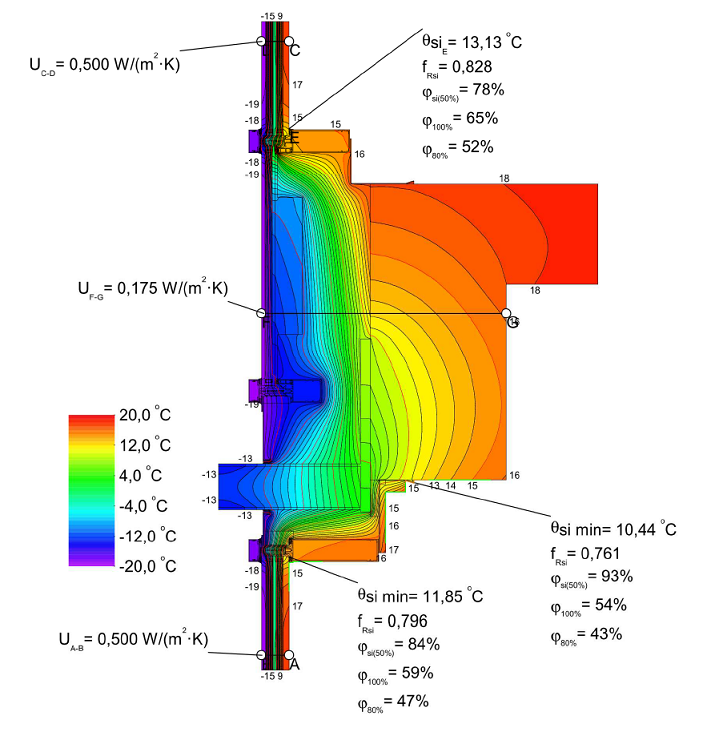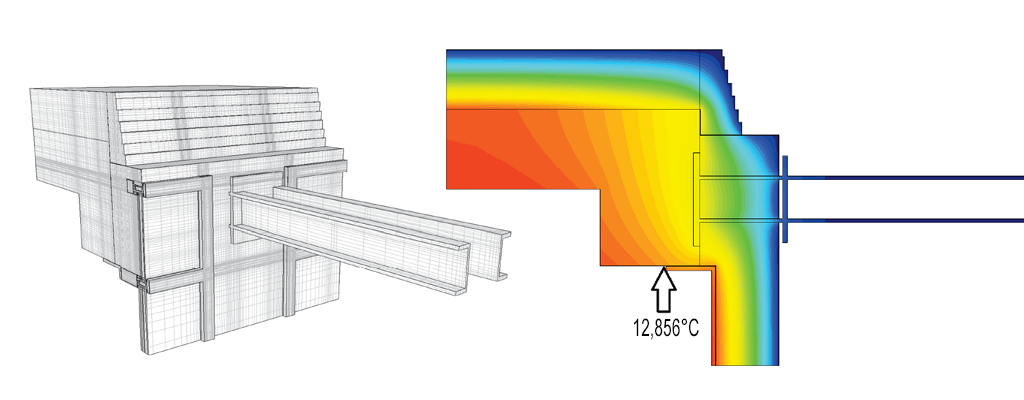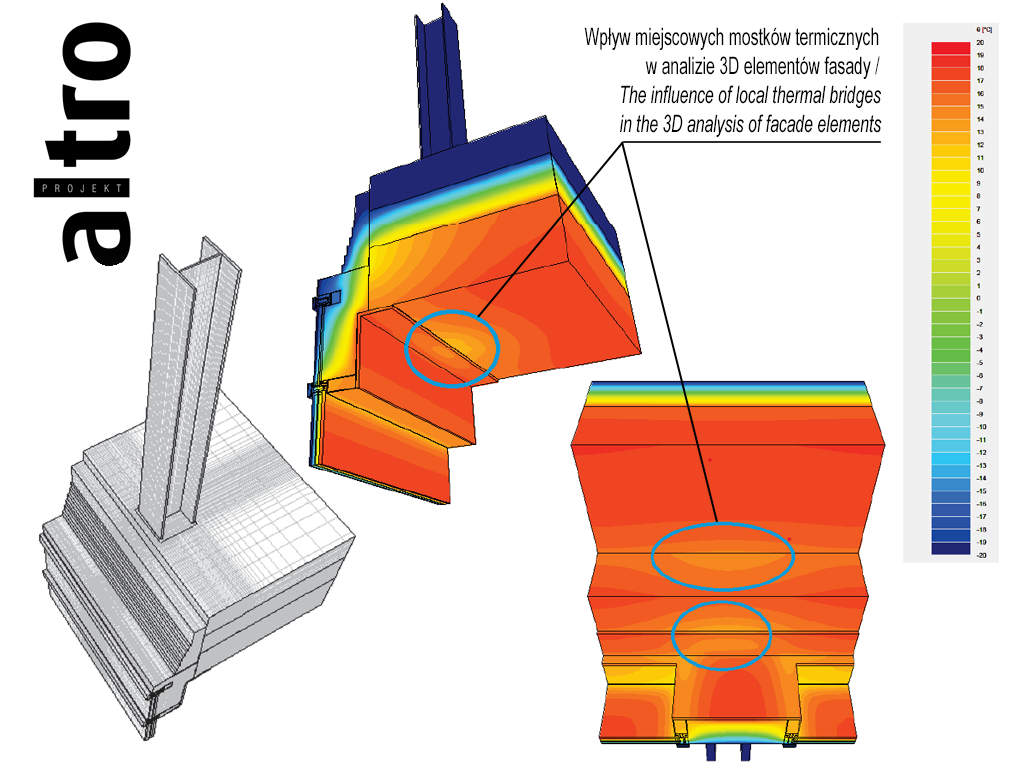
3D modeling in thermal calculations of facades
Glazed facades have become an integral element of modern architecture, introducing natural light into buildings and providing spectacular views of the surroundings. However, to achieve optimal thermal comfort and energy efficiency in buildings, it is necessary to understand and meet the increasingly stringent requirements for the thermal performance of glass facades and the minimization of thermal bridges.

In the context of thermal analyses of glazed facades, we focus on accurate modelling of the thermal behaviour of the structure. First of all, the value of the U-coefficient is assessed, which determines the ability of the facade to conduct heat. A particularly critical element of glazed facades are the so-called „thermal bridges”. These are places where the thermal barrier is disturbed by structural elements such as steel profiles or joints. For engineers, eliminating or minimizing the impact of thermal bridges is a priority because they can significantly reduce the energy efficiency of the envelope and building.

We analyse the impact of thermal bridges in detail, using dedicated calculation programs, also in three-dimensional layouts. These programs allow for detailed analyzes of structural elements and determination of their impact on the thermal properties of the facade. This makes it possible to develop design solutions that minimize heat losses in thermal bridge areas.

Advanced engineering tools enable us to more precisely study the thermal properties of facades, which is crucial to ensuring optimal thermal comfort and energy efficiency in modern buildings. Thanks to numerical simulations and 3D technologies, we can model the thermal behavior of facades in various climatic conditions, which allows us to design more energy-efficient and environmentally friendly glazed facades.
